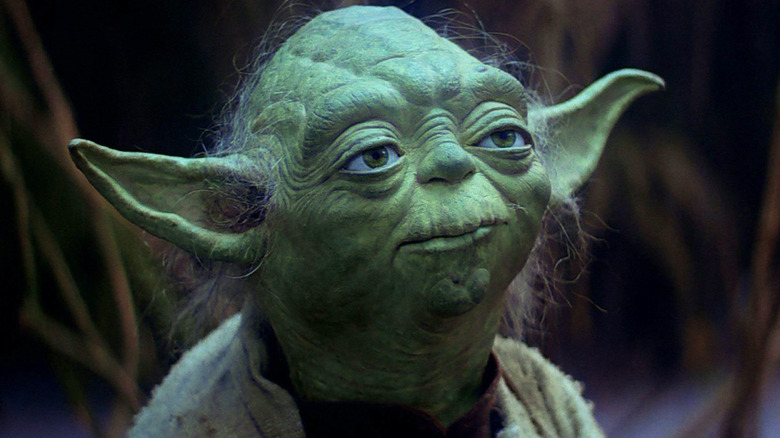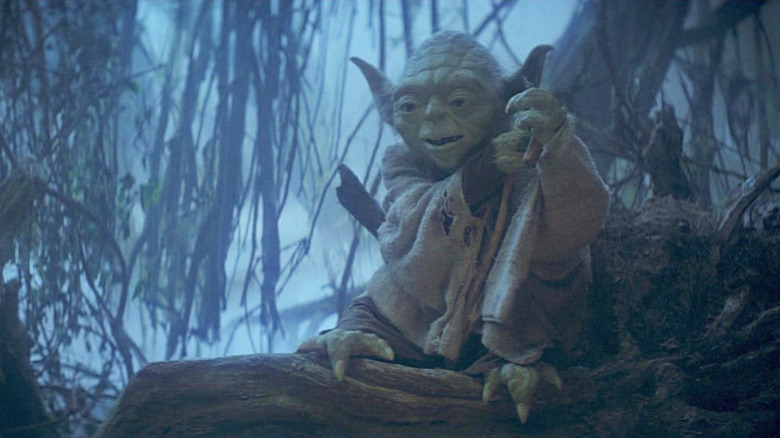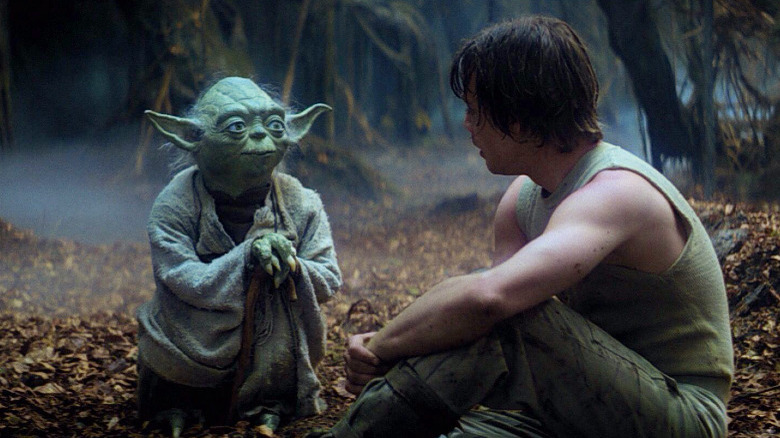How Raccoons In A Bathtub Helped Set The Tone For Star Wars: The Empire Strikes Back
Thanks to the one-two release of visual effects legend Phil Tippett's nightmarish magnum opus "Mad God" and Lawrence Kasdan's Industrial Light & Magic docuseries "Light & Magic" in 2022, Tippett has come to enjoy some long overdue recognition as one of the unsung heroes of Hollywood's blockbuster era (which began roughly in 1975 with the runaway success of "Jaws"). But seeing as cinema is an audiovisual medium, legendary sound designer Ben Burtt is equally noteworthy for shaping the blockbuster soundscape over the last five decades.
After getting his start on the Roger Corman-produced "Death Race 2000" in 1975 (for which he was uncredited), Burtt served as a sound designer and artist on the original "Star Wars" trilogy. In between working on those films, Burtt lent his skills to "Invasion of the Body Snatchers" (the 1978 remake), "Raiders of the Lost Ark," "E.T. the Extra-Terrestrial," and "The Dark Crystal." It's possible you may have heard of one or two of those movies. Years later, Burtt reunited with "Star Wars" creator George Lucas on his prequel films, and he even provided the voice for the titular robot in Pixar's 2008 animated movie "WALL-E."
Burtt's approach to designing the sumptuous sounds of a galaxy far, far way — be they the instantly recognizable TIE Fighter "screams" or the low-hum buzzing of lightsabers — always entailed mixing and matching noises from the real world. "The organic nature of the sound is the defining basis for everything done in 'Star Wars,'" he told StarWars.com, speaking in a 2020 interview to mark the 40-year anniversary of "The Empire Strikes Back." Still, when it came to the much-anticipated sequel to "A New Hope," he and Lucas both knew they would have to think outside the box.
This is where the raccoons come in.
Mudhole? Slimy? My home this is!
In "Star Wars: The Empire Strikes Back," our hero Luke Skywalker (Mark Hamill) goes searching for a mysterious exiled Jedi named Yoda on the planet Dagobah, unaware the Outer Rim planet is home to "countless shallow lakes and lagoons and multiple living caves" (via Wookieepedia) — or, as Luke himself calls it much to Yoda's incredulity, a "slimy mudhole."
"We wanted Dagobah to be teeming with off-screen life; life that you basically didn't see," Ben Burtt explained in his StarWars.com interview. "It was entirely invisible. It was under the leaves or under the bark or something in the trees."
Among the animal noises Burtt integrated into his sound mix for Dagobah were the cries of woodpeckers from the Redwood National Forest and those of different birds from the San Francisco Zoo. The chaotic and "echoey" sound of the zoo's fowls in their giant cages helped to create the aural environment he was going for. "When you recorded in there and slowed it way down, way down, the little high-pitched chirps became unidentifiable unknown creatures that sparked your imagination," Burtt noted.
He felt the chittering of raccoons would only further add to the ambiance, assuming he could figure out a way to record them. "Animals are noisy and you had to come up with a method of isolating the animal from unwanted noises. [...] In the case of the raccoons, they just wouldn't stop moving," said Burtt. His solution? To take them to a game farm based just south of San Francisco, where it would be easier to isolate them and keep them in a single place. Once there, however, Burtt said he and the farm's owner realized they would have to take things a step further than expected.
Raccoons in the tub, chimps in the office
Burtt explained that he and the farm's owner brought the raccoons into the latter's farmhouse before putting them in the bathroom "where it was quieter" and shutting the door. "We put them in the tub — the empty tub — because then they couldn't get out. It was slippery and the animals just stopped moving and sat there crying." No doubt this task would've been much easier with Raccacoonie on standby.
Nevertheless, Burtt got the chitters he was looking for and was able to seamlessly blend them with other animal noises, including the cries of some chimpanzees he borrowed from Marine World/Africa USA. In that case, Burtt placed the apes in the office of his co-worker, "Bob," who was away on vacation at the time. It seems "Bob" got a bit of a surprise when he returned. "We put the chimps in there and we sat around with the microphones. The chimps started going wild!" Burtt recalled. "They opened the drawers of his desk and threw pencils and papers in the air. They jumped around knocking about furniture and books." Fortunately, he got "great sounds" of the chimps, so the destruction of Bob's office was not in vain.
The results speak for themselves. The sounds of creatures heard yet never seen among the swampy Dagobah landscape do their part to make the planet feel alive, imbuing it with a dangerous, untamed quality that nicely sets the tone for not just the scenes with Luke and Yoda, but in some ways, many of the darker events that transpire in "The Empire Strikes Back." Here's to all the unsung heroes — both two-legged and four-legged alike — who made director Irvin Kershner's "Star Wars" sequel the bonafide classic that it is.


